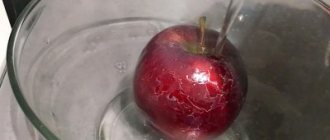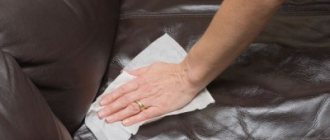Hair removal with wax is not an easy procedure that requires adherence to technology and careful preparation.
Due to the specific nature of the depilation procedure, after it there may be residues of a sticky substance on the skin that were not removed during the treatment. How to remove wax from skin after depilation? It is not difficult to remove if you know exactly how to proceed.
What is the cause of the residue on the body?
Depilatory wax itself is a fat-like thick substance that can melt under the influence of temperature. Waxes used in cosmetology are hydrophobic - they are simply insoluble in water.
If the procedure is carried out carefully and the entire algorithm of actions is followed, no serious problems with the sticky mass arise. The remaining small amount of wax can be easily removed, for example, with specially impregnated wipes, which come with many sets.
Factors that lead to the problem include:
Applying a large amount of wax to the area.- Poor fit of the strip to the body.
- Slow removal of the wax strip.
- The wax is too hot.
- Wax not heated enough.
- Too long or, conversely, short hairs.
It is easier to remove the remaining wax immediately before it dries and much time has passed.
Results
- Waxing may leave sticky marks.
- The cause of this problem is most often the incorrect execution of the procedure technique, as well as liquid working material.
- It is recommended to remove any remaining sticky material immediately.
- For this purpose, special cosmetic preparations or improvised means are used.
- Ignoring the recommendations can cause skin problems: hives, irritation, acne.
- To prevent such situations, it is important to follow the waxing instructions. We also recommend that you familiarize yourself with sugaring techniques in this material.
How to remove remaining traces using improvised means?
The issue can be resolved by applying heat and using products containing fats . Simply rubbing the skin with a washcloth under running water is not advisable, as this can cause scratching and other damage to the skin.
Vegetable oil
The easiest way to cleanse your skin is to take vegetable oil from your kitchen. Any will do. Limitation – absence of allergies to the chosen product.
Procedure:
- Apply oil generously to a cloth;
- Working methodically, clean the skin with a cloth.
If the wax layer is thick, then each area will have to be treated several times, replacing used wipes with clean ones.
Nutritious cream
Face or body creams that are oily in consistency can also be used as a cleanser. To fix the problem, you can use a cotton napkin. The cream is applied liberally to it and helps remove the sticky substance. At the same time, the skin softens, receiving additional nutrition.
Hairdryer
Warming up an area of skin using a stream of warm air is a proven method, but requires caution. The main danger of the method is the possibility of overheating of the composition, and, as a result, the possibility of burns.
How to use a hair dryer:
- Set the hair dryer to supply warm, but not hot, air.
- Warm up the wax from a distance of 20 cm.
- As soon as it starts to melt from the high temperature, remove it with a napkin.
Warm towel
A warm towel will have a softer effect than a hairdryer. For these purposes, choose cotton that does not have hairiness. It must be clean. You can also use cotton napkins.
Work order:
- iron the fabric;
- apply a warm cloth to the area of skin with adhered wax so that the composition saturates the material;
- carefully remove the material;
- wipe the skin.
Use a clean cloth to treat a new stained area.
Top 6 special compositions
Professional cosmetologists use special products to remove wax from the skin. These drugs can be purchased at beauty salons and stores selling depilatory products. Cosmetics after depilation are designed to effectively remove wax residues.
Kapous Professional
Cleansing oil is designed to remove wax marks and care for the epidermis. The product has a multifaceted complex effect:
- saturates with nutrients;
- enriches with microelements;
- softens;
- calms;
- promotes recovery;
- tones.
After using the oil, the skin becomes soft, looks moisturized, elastic and nourished, and gains radiance. No greasy marks remain on the skin.
The price for a 0.5 liter bottle is about 500 rubles.
Arco cosmetici with Aloe Vera
The post-depilation gel made in Italy has a delicate effect. It contains proteins and substances that have a calming effect. The drug is used very sparingly.
This drug:
- relieves irritation;
- slows down hair growth in the treated area;
- carries out antiseptic treatment.
Price – 900 rubles per 0.5 liter bottle.
Cristaline NG
The oil from a well-known company from the USA is intended for use after depilation. It contains extracts of calendula and chamomile, vitamin E.
Cleansing oil after depilation NG has beneficial effects:
- relieves irritation;
- stimulates the regeneration process;
- removes wax;
- minimizes the risk of inflammation;
- increases skin elasticity;
- protects against UV radiation;
- nourishes.
The cost of a 0.25 liter product is about 450 rubles.
Depilica Cleaning Oil Professional
The oil is a post-depilation cleansing oil made in Spain. It contains plant extracts and inhibitors that slow down hair growth. Suitable for all skin types, including sensitive ones. The composition does not contain parabens or other harmful substances.
Advantages of use:
- effective removal of wax residues from the skin;
- softening;
- slower hair growth.
The average price for 500 ml is about 900 rubles.
DepilActive Domix
The oil has a cooling and soothing effect and makes it easy to remove remaining wax.
Contains:
- vitamin E;
- plantain extract;
- menthol.
Price – about 350 rubles for a volume of 310 ml.
Cream DepilActive Domix
Post-depilation cream is a gentle care product suitable for sensitive areas. The product delicately removes wax residues.
Contains:
- panthenol;
- Castor oil;
- aloe extract;
- almond oil;
- avocado oil
Sulfates and alcohol are absent. The price for a container with a volume of 310 ml is about 350 rubles.
How to remove wax from clothes?
If, due to your carelessness, wax still gets on your clothes, there is no need to quickly remove them and try to wash them by hand or using a washing machine. As we wrote above, water can only speed up the hardening process of the base, which will make it much more difficult to remove.
If still hot or warm liquid wax gets on your clothing, use a spatula to remove excess wax.
Then use the following method to remove wax from clothing:
- Take two paper napkins. Place one of them on the outer part of the clothing on which the sticky stain has formed. The other is on the inside. At the same time, be careful not to stain it more.
- Heat the iron to medium heat. Do not make its surface too hot.
- Iron carefully over the top cloth. Make sure it is large enough to prevent wax from leaking onto the surface of the iron.
- As the base heats up, it will melt and be absorbed into the placed napkins.
- Put the iron away, change the napkins and repeat the previous steps.
- After removing the stickiness, wash the clothes.
Most often, difficulties in removing wax from clothes arise when processing unusual fabrics, into which the base quickly eats away. Because of this, it is recommended to wear homemade cotton clothes before waxing, which you wouldn’t mind getting dirty.
How can I remove the stickiness after wax strips from my face?
The skin on the face is sensitive and tends to enlarge pores and cause irritation if not properly cared for. Even waxing itself is a traumatic procedure, causing damage to the top layer of skin.
The use of oils can lead to clogged pores. If they are used, their consistency should not be too thick. Warming up is also not advisable, it can lead to inflammation.
The best option is to use special tools. In this case, the face will be cleansed, and severe irritation will not occur.
Why does wax remain on the skin after depilation?
Waxing involves removing unwanted hair from the body using special cosmetic wax. It is quite convenient to use, but it is highly sticky, which is why it often sticks to the skin, clothing or nearby objects.
When doing waxing on their own, girls often encounter “sticks” that are quite difficult to eliminate.
There are several reasons why wax remains on the skin:
- Use of low quality bandages. When performing the bandage waxing technique, you can use fabrics that are too thin or materials with large piles. Then they will simply stick to the wax and remain with it on the skin.
- Improper execution of the procedure. Waxing requires a certain skill, which is why not all beginners can do it right away.
- Neglecting recommendations for preparing skin for work. The surface to be treated must first be disinfected and sprinkled with talcum powder or baby powder.
- Poor quality wax or insufficient preparation. For any type of waxing (cold, warm or hot), it is important to pay attention to preparing the base. Its insufficient heating or overheating can negatively affect the efficiency of working with it.
In any case, wax on the skin creates a lot of discomfort for the girl. Its prolonged presence on the skin can lead to irritation and rashes. In addition, it may accidentally stick to clothing.
Treatment of the skin after the procedure
Once the wax has been completely removed, the procedure cannot yet be considered complete. The epidermis needs restoration .
With proper care, the skin will recover completely within a few days. The most severe irritation occurs during the first depilation procedure, when the hairs are still strong and there are quite a lot of them.
Ignoring the technology of the procedure and the rules of conduct after surgery can lead to the formation of acne and suppuration. If pustules and other injuries occur, it is necessary to treat the areas of inflammation.
The following medications are suitable for this:
- Spot - medical alcohol.
- Anti-acne ointments of the “Zinerit” type.
- Cream with Panthenol.
- Iodine - spot on.
- Chlorhexidine.
- Salicylic acid - spot.
Poor removal of all wax is one of the reasons for the development of pustules, since the skin covered with a dense composition is isolated from air and experiences injury due to rubbing.









